Abstract
Expression of keratins 1, 6, 15, 16, and 20 was examined in normal cervical epithelia, squamous metaplasia, various grades of cervical intraepithelial neoplasia, and both squamous cell carcinomas and adenocarcinomas of the cervix with monospecific antibodies. Ectocervical epithelium contains all of these keratins except keratin 20. They show a heterogeneous distribution, with a basally restricted detection of keratin 15. Endocervical columnar cells were found to contain significant amounts of keratin 16, whereas the subcolumnar reserve cells expressed considerable amounts of keratin 15 and 16, and frequently keratin 6. These reserve cell keratins were also found in immature and mature squamous metaplastic epithelium. In the cervical intraepithelial neoplastic lesions they were generally found with increasing intensity as the severity of the lesion progressed. In the keratinizing variety of squamous cell carcinoma of the cervix, these three keratins seem to constitute an important part of the intermediate filament cytoskeleton, whereas in nonkeratinizing squamous cell carcinoma, they occur to a much lesser extent. Surprisingly, these keratins were also occasionally found in adenocarcinomas. From these data we conclude that the keratin phenotype of reserve cells and endocervical columnar cells is more complex than previously suggested. In particular, the keratins occurring in reserve cells are also present in most of the premalignant and in a considerable number of the malignant lesions of the cervix. The differentiation features of the various carcinoma types are, however, reflected in their specific keratin filament composition.
Full text
PDF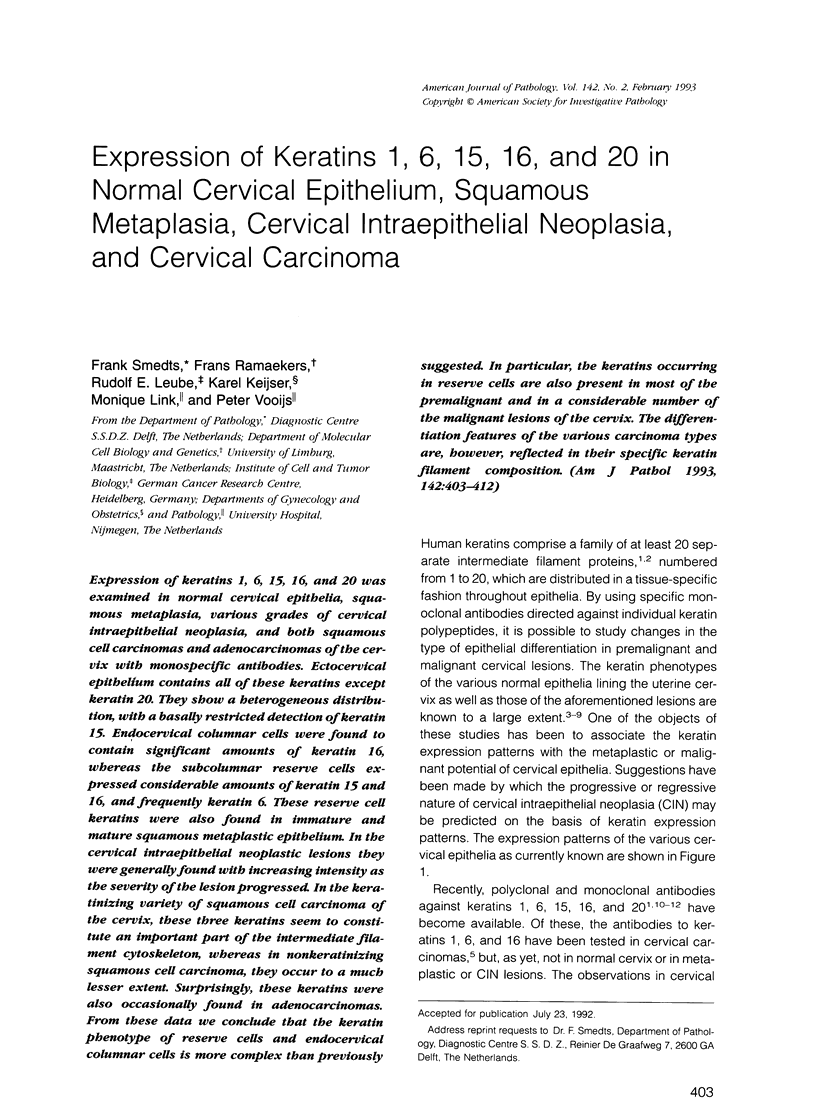
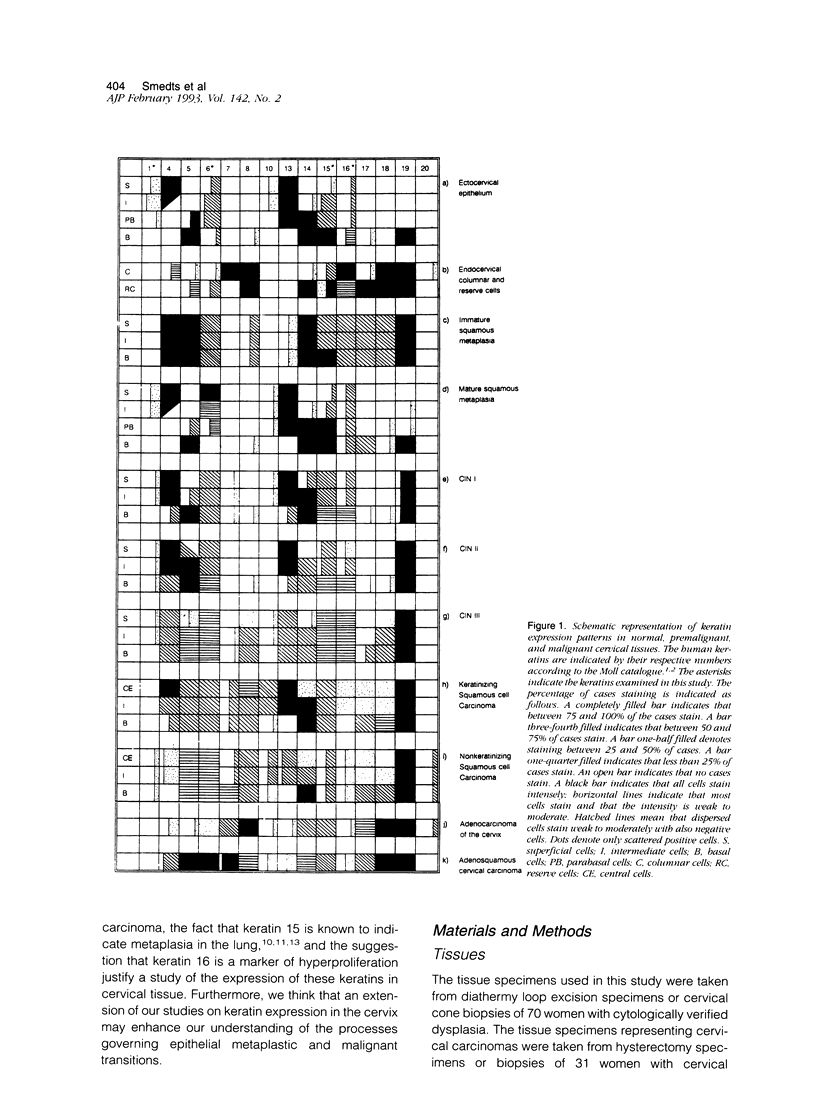
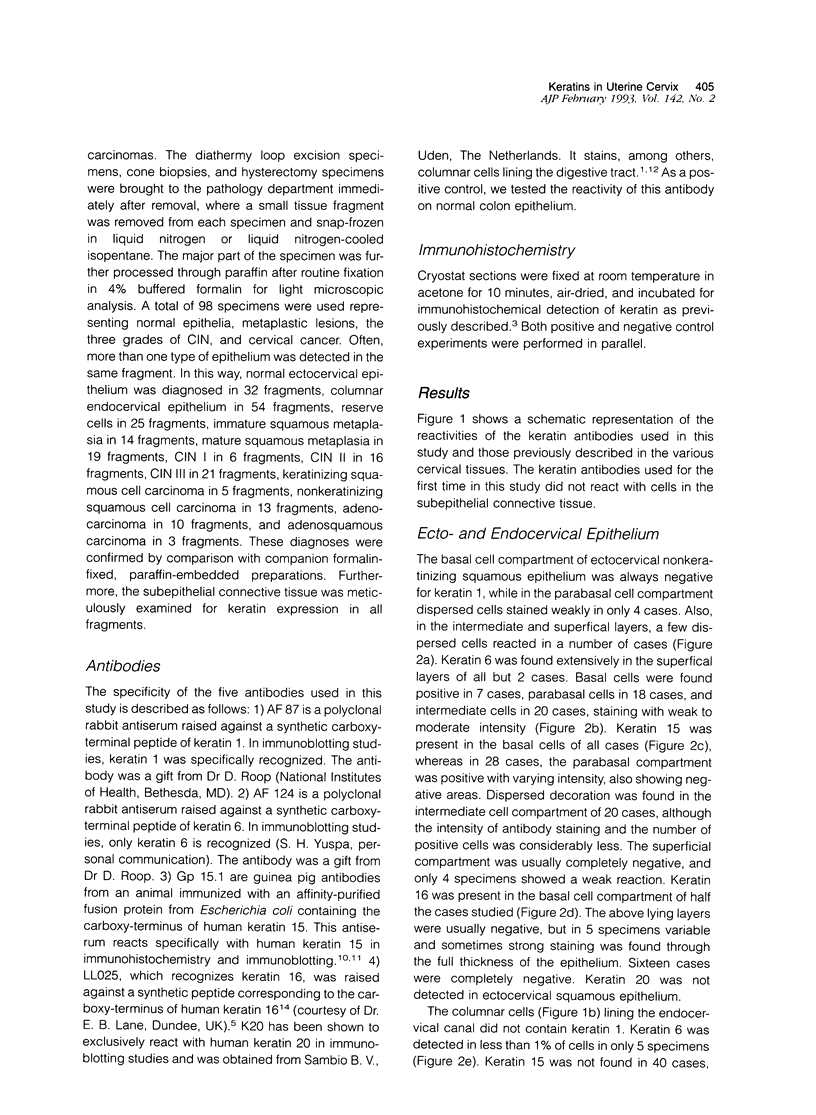
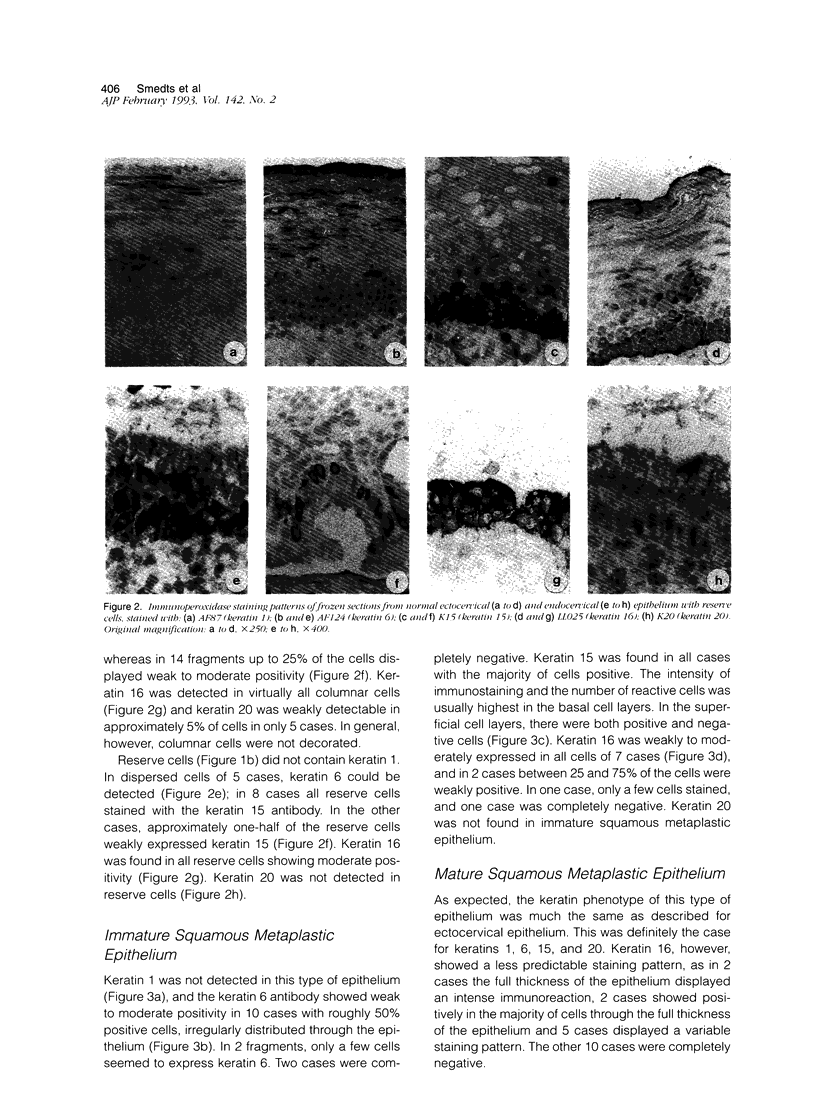
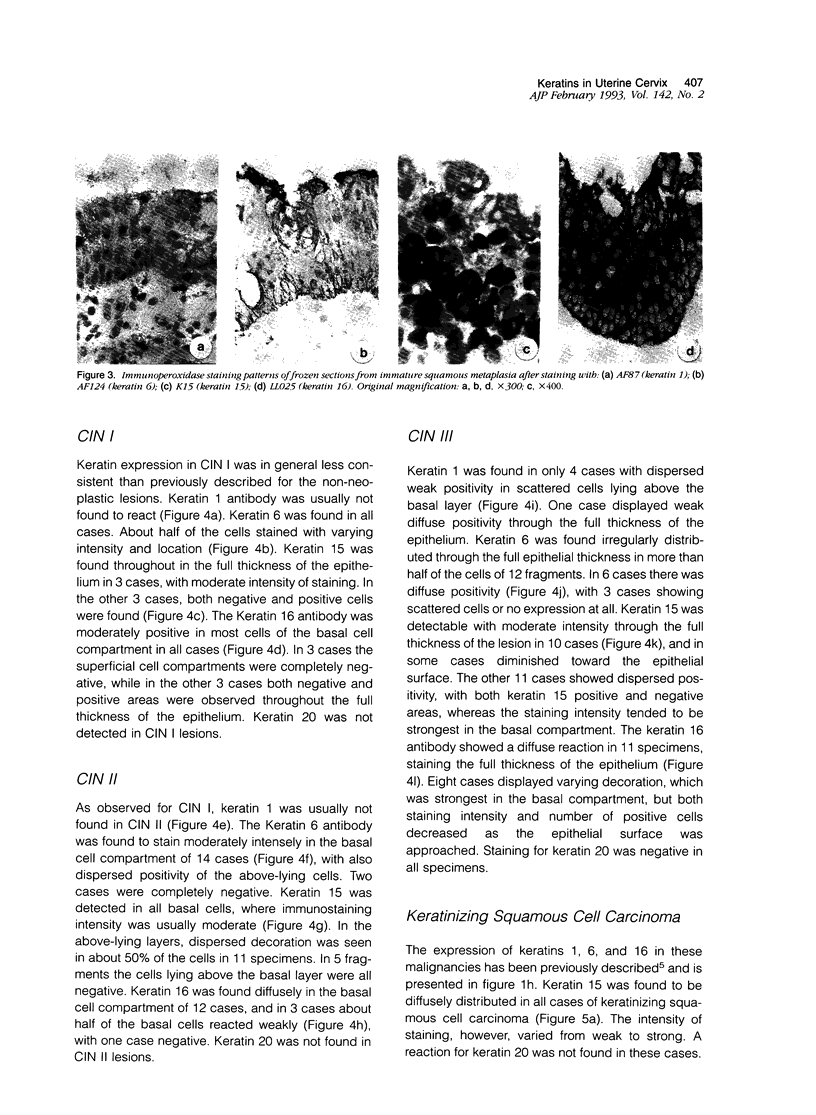
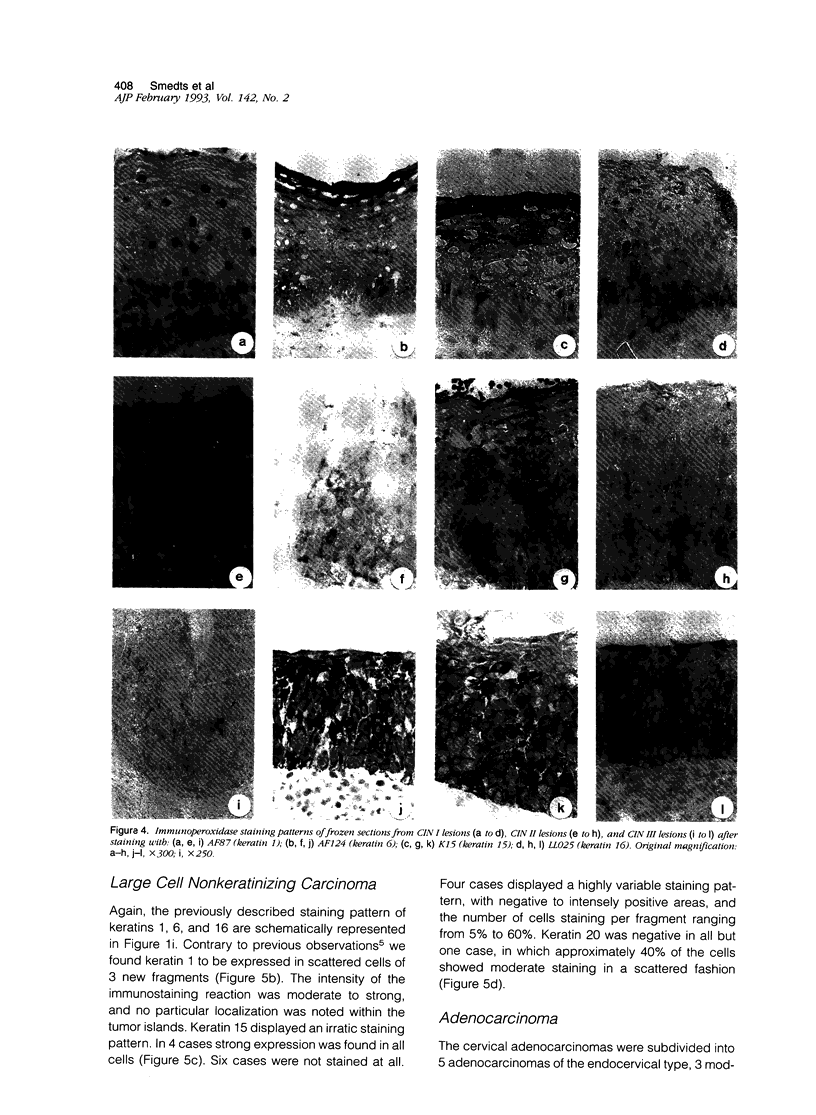
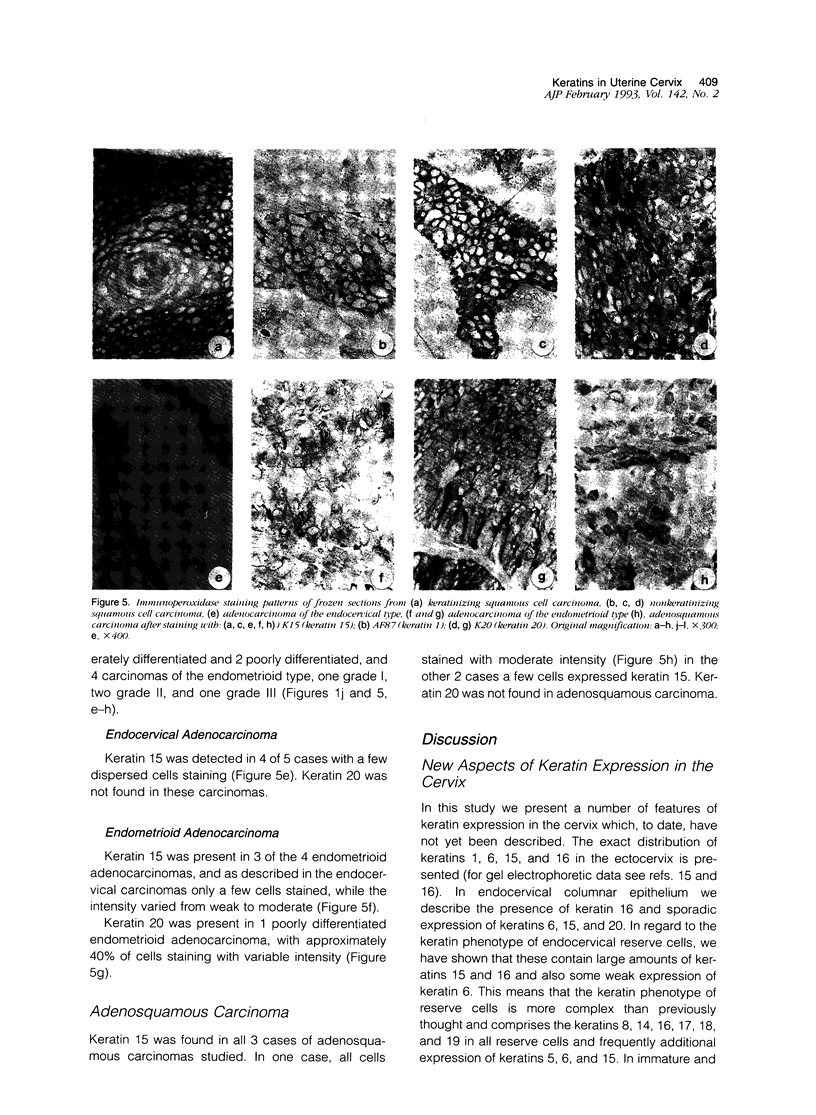
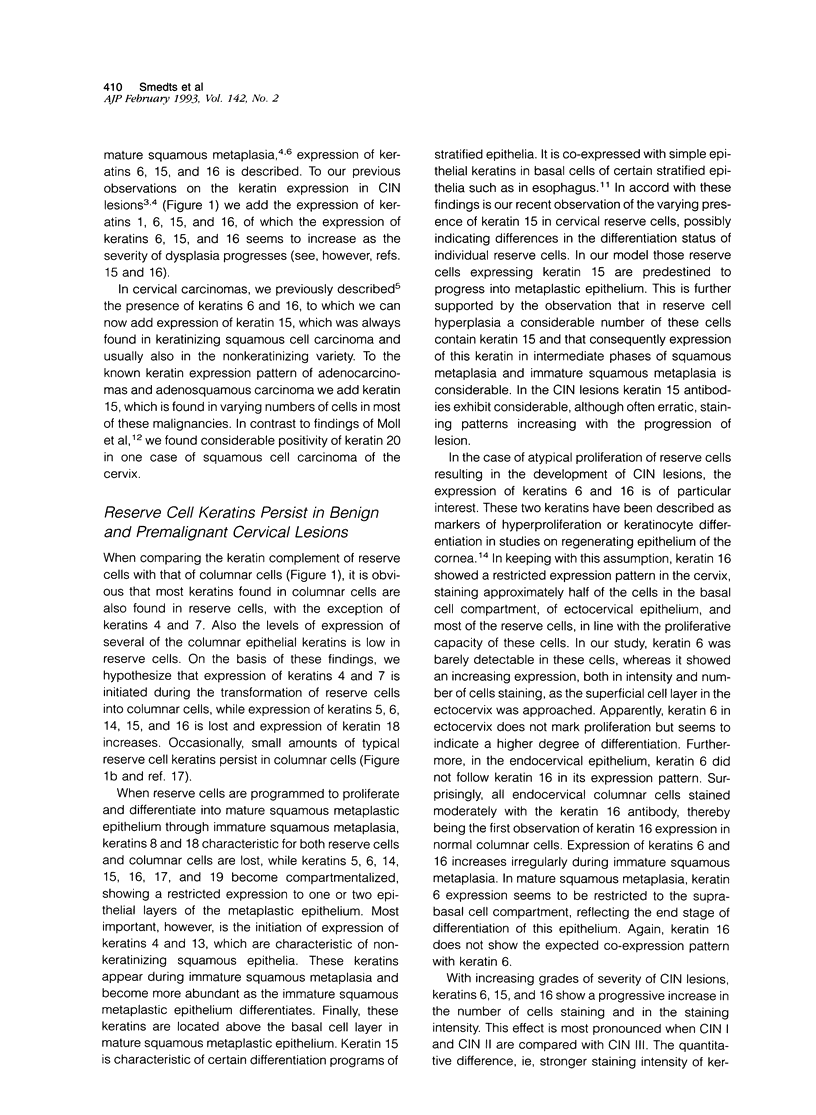
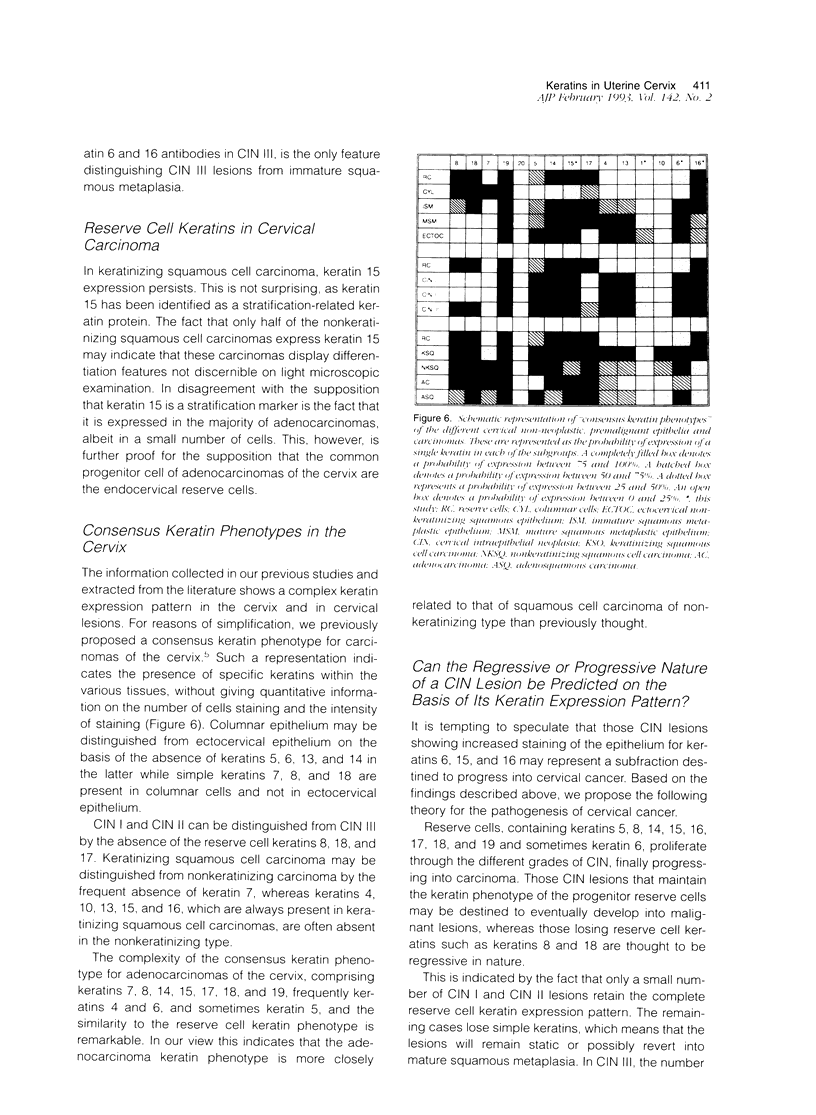
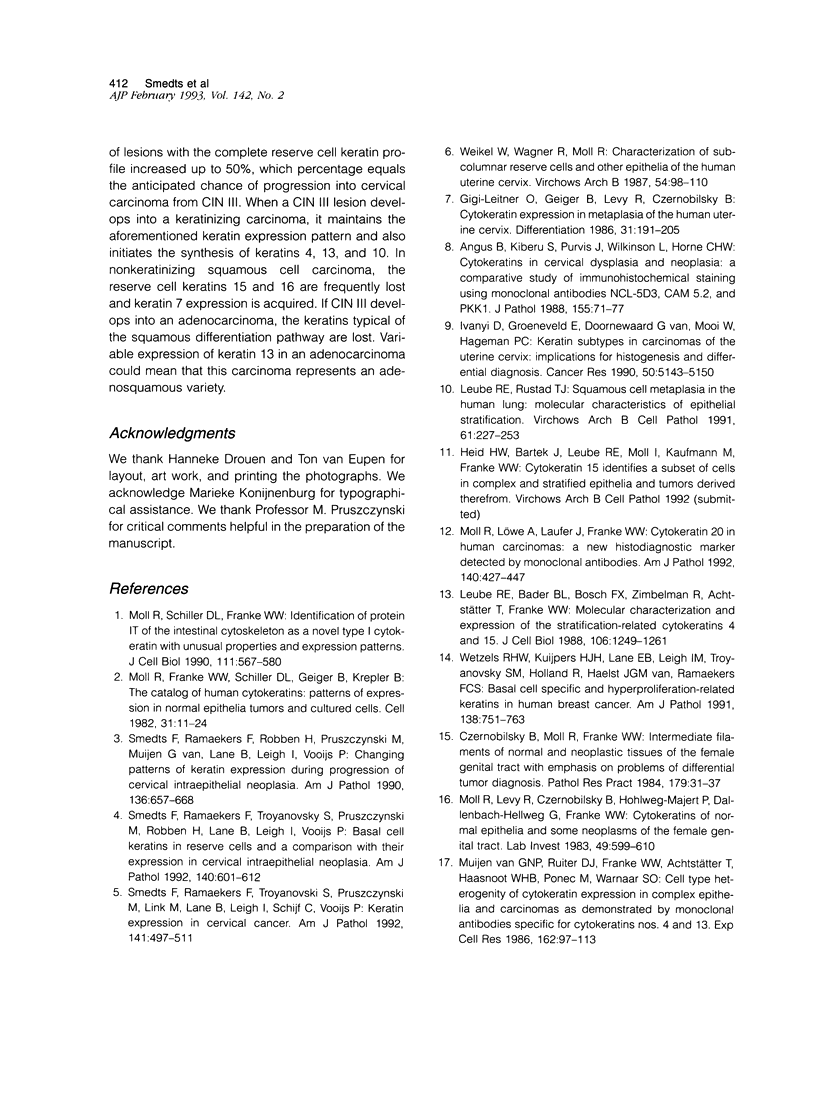
Images in this article
Selected References
These references are in PubMed. This may not be the complete list of references from this article.
- Angus B., Kiberu S., Purvis J., Wilkinson L., Horne C. H. Cytokeratins in cervical dysplasia and neoplasia: a comparative study of immunohistochemical staining using monoclonal antibodies NCL-5D3, CAM 5.2, and PKK1. J Pathol. 1988 May;155(1):71–75. doi: 10.1002/path.1711550111. [DOI] [PubMed] [Google Scholar]
- Czernobilsky B., Moll R., Franke W. W., Dallenbach-Hellweg G., Hohlweg-Majert P. Intermediate filaments of normal and neoplastic tissues of the female genital tract with emphasis on problems of differential tumor diagnosis. Pathol Res Pract. 1984 Sep;179(1):31–37. doi: 10.1016/S0344-0338(84)80058-8. [DOI] [PubMed] [Google Scholar]
- Gigi-Leitner O., Geiger B., Levy R., Czernobilsky B. Cytokeratin expression in squamous metaplasia of the human uterine cervix. Differentiation. 1986;31(3):191–205. doi: 10.1111/j.1432-0436.1986.tb00400.x. [DOI] [PubMed] [Google Scholar]
- Ivanyi D., Groeneveld E., Van Doornewaard G., Mooi W. J., Hageman P. C. Keratin subtypes in carcinomas of the uterine cervix: implications for histogenesis and differential diagnosis. Cancer Res. 1990 Aug 15;50(16):5143–5152. [PubMed] [Google Scholar]
- Leube R. E., Bader B. L., Bosch F. X., Zimbelmann R., Achtstaetter T., Franke W. W. Molecular characterization and expression of the stratification-related cytokeratins 4 and 15. J Cell Biol. 1988 Apr;106(4):1249–1261. doi: 10.1083/jcb.106.4.1249. [DOI] [PMC free article] [PubMed] [Google Scholar]
- Leube R. E., Rustad T. J. Squamous cell metaplasia in the human lung: molecular characteristics of epithelial stratification. Virchows Arch B Cell Pathol Incl Mol Pathol. 1991;61(4):227–253. doi: 10.1007/BF02890425. [DOI] [PubMed] [Google Scholar]
- Moll R., Franke W. W., Schiller D. L., Geiger B., Krepler R. The catalog of human cytokeratins: patterns of expression in normal epithelia, tumors and cultured cells. Cell. 1982 Nov;31(1):11–24. doi: 10.1016/0092-8674(82)90400-7. [DOI] [PubMed] [Google Scholar]
- Moll R., Levy R., Czernobilsky B., Hohlweg-Majert P., Dallenbach-Hellweg G., Franke W. W. Cytokeratins of normal epithelia and some neoplasms of the female genital tract. Lab Invest. 1983 Nov;49(5):599–610. [PubMed] [Google Scholar]
- Moll R., Löwe A., Laufer J., Franke W. W. Cytokeratin 20 in human carcinomas. A new histodiagnostic marker detected by monoclonal antibodies. Am J Pathol. 1992 Feb;140(2):427–447. [PMC free article] [PubMed] [Google Scholar]
- Moll R., Schiller D. L., Franke W. W. Identification of protein IT of the intestinal cytoskeleton as a novel type I cytokeratin with unusual properties and expression patterns. J Cell Biol. 1990 Aug;111(2):567–580. doi: 10.1083/jcb.111.2.567. [DOI] [PMC free article] [PubMed] [Google Scholar]
- Smedts F., Ramaekers F., Robben H., Pruszczynski M., van Muijen G., Lane B., Leigh I., Vooijs P. Changing patterns of keratin expression during progression of cervical intraepithelial neoplasia. Am J Pathol. 1990 Mar;136(3):657–668. [PMC free article] [PubMed] [Google Scholar]
- Smedts F., Ramaekers F., Troyanovsky S., Pruszczynski M., Link M., Lane B., Leigh I., Schijf C., Vooijs P. Keratin expression in cervical cancer. Am J Pathol. 1992 Aug;141(2):497–511. [PMC free article] [PubMed] [Google Scholar]
- Smedts F., Ramaekers F., Troyanovsky S., Pruszczynski M., Robben H., Lane B., Leigh I., Plantema F., Vooijs P. Basal-cell keratins in cervical reserve cells and a comparison to their expression in cervical intraepithelial neoplasia. Am J Pathol. 1992 Mar;140(3):601–612. [PMC free article] [PubMed] [Google Scholar]
- Weikel W., Wagner R., Moll R. Characterization of subcolumnar reserve cells and other epithelia of human uterine cervix. Demonstration of diverse cytokeratin polypeptides in reserve cells. Virchows Arch B Cell Pathol Incl Mol Pathol. 1987;54(2):98–110. doi: 10.1007/BF02899201. [DOI] [PubMed] [Google Scholar]
- Wetzels R. H., Kuijpers H. J., Lane E. B., Leigh I. M., Troyanovsky S. M., Holland R., van Haelst U. J., Ramaekers F. C. Basal cell-specific and hyperproliferation-related keratins in human breast cancer. Am J Pathol. 1991 Mar;138(3):751–763. [PMC free article] [PubMed] [Google Scholar]
- van Muijen G. N., Ruiter D. J., Franke W. W., Achtstätter T., Haasnoot W. H., Ponec M., Warnaar S. O. Cell type heterogeneity of cytokeratin expression in complex epithelia and carcinomas as demonstrated by monoclonal antibodies specific for cytokeratins nos. 4 and 13. Exp Cell Res. 1986 Jan;162(1):97–113. doi: 10.1016/0014-4827(86)90429-5. [DOI] [PubMed] [Google Scholar]






